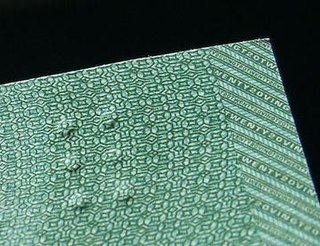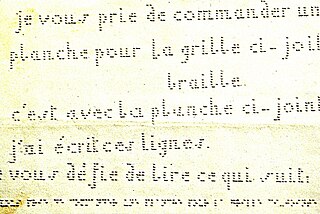 W
WA tactile alphabet is a system for writing material that the blind can read by touch. While currently the Braille system is the most popular and some materials have been prepared in Moon type, historically, many other tactile alphabets have existed:Systems based on embossed Roman letters: Moon type Valentin Haüy's system James Gall's "triangular alphabet", using both capital and lower-case, which was used in 1826 in the first embossed books published in English Edmund Frye's system John Alston's system Jacob Snider, Jr.'s system, using rounded letters similar to Haüy's system, which was used in a publication of the Gospel of Mark in 1834, the first embossed book in the United States. Samuel Gridley Howe's Boston Line using lowercase angular letters, influenced by Gall's system but more closely resembling standard Roman letters Julius Reinhold Friedlander's Philadelphia Line, using all capital letters, similar to Alston's system, used at the Pennsylvania Institution for the Instruction of the Blind in Philadelphia, Pennsylvania William Chapin 's system, combining the lowercase letters of the Boston Line with the capitals of the Philadelphia Line, forming the "combined system" Elia Chepaitis's ELIA Frame tactile alphabet/font system includes the major characteristics of the Roman alphabet letter within a frame. The frame denotes where the letter begins and ends and allows for systematic exploration. The use of the Roman alphabet's features in the design helps previously sighted people learn it. And its similarities to standard Roman fonts helps sighted caregivers to learn and share the alphabet with people who have a visual impairment. Systems based on arbitrary symbols: Night writing Braille Thomas Lucas's system, based on shorthand and phonetic principles James Hatley Frere's system, similar to Lucas's in that it was based on shorthand, but written in a boustrophedon manner New York Point, a system of points invented by William Bell Wait, that competed with braille for some time before braille won out Decapoint
 W
WThomas Rhodes Armitage was a British physician, and founder of the Royal National Institute of Blind People.
 W
WCharles Barbier de la Serre was the inventor of several forms of shorthand and alternative means of writing, one of which became the inspiration for Braille.
 W
WBoston line letter was a tactile writing system created by Dr. Samuel Gridley Howe in 1835, a popular precursor to the now-standardized Braille.
 W
WThe Canadian currency tactile feature is a feature on the Canadian Journey and Frontier series of Canadian banknotes to aid people who are visually impaired to identify the notes. The feature indicates the banknote denomination in the upper left corner of the face side of the bill using a series of raised dots. It was suggested by Bruno Thériault, an administrator for the Canadian National Institute for the Blind, and designed by Susan Lederman, a professor of psychology at Queen's University.
 W
WDecapoint, or raphigraphy, was a tactile form of the Latin script invented by Louis Braille as a system that could be used by both the blind and sighted. It was published in 1839. Letters retained their linear form, and so were legible without training to the sighted, but the lines were composed of embossed dots like those used in braille. Each letter contained ten dots in the height and different dots in the width to produce the graphic form of print.
 W
WNew York Point is a braille-like system of tactile writing for the blind invented by William Bell Wait (1839–1916), a teacher in the New York Institute for the Education of the Blind. The system used one to four pairs of points set side by side, each containing one or two dots. The most common letters are written with the fewest points, a strategy also employed by the competing American Braille.